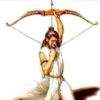Thanks varaali for the explanation.
With regards to Sri Adi Shankaracharya and Advaitha philosophy, have few questions. I have just started reading the holy texts recently, so my understanding is limited. Could you please clarify the below:
A) As per my understanding, Sri Adi Shankaracharya propounded supreme consciousness as the driver for everything. And, that supreme consciousness can be realized by anyone through Knowledge. And, there is no specific creator who drives this universe but only that supreme consciousness. If that is the case, then what was the reason for writing devotional hymns dedicated to various Gods like Lord Shiva, Lord Narasimha, Lord Krishna and so on. If one can achieve Moksh only through knowledge(Gnana) then what was the purpose of establishing idols/statues of God/Goddess in the Peeths, and performing prayers to the God/Goddess.
Answering the part highlighted in green above.
Chanting devotional hymns / doing puja etc is a very important step towards gaining jnana. They may not be an end in themselves but they cannot be bypassed either. If you have read the Shaankara Bhashyas, you will find that Shankara paid utmost importance to the performance of agnihotra and other mandated kriyas. But the main point to be remembered is that such kriyas...puja/ bhajan/ agnihotra karmas are a valuable step in the achieveing the final goal- which is - the supreme jnana, but not an end in themselves.
B) If supreme consciousness pervades everything and a person's deeds determine his destiny, then in that case why it is important to perform rituals after death. Also, as I understand everyone is accounted for his actions/karma, then in that case, how can final rites performed by others drives a person's destiny after his death in the next birth. I mean to say a person's account of karma in that lifecycle ends with his death and he takes a new life form/ gets liberation based on his karma. So, in my view after his death, performing of final rites by others(whose actions are not in the control of the dead person) can drive his destiny in the future seems inconsistent.
I never said Post death rituals determine the 'destiny' of the next birth. Whether the aatma takes goes immediately into another womb or has the capacity to wait and decide depends on the spiritual strength made by the person in the previous life (the life that has just ended). But post death rituals are important from days 1 to 11 when the aatma, now bereft of the body, is indeed dependent on the next-of-kin- supplying it with rice and water. On the 11 day, the aatma is made to merge with the pitrus (the sapindeekaranam rite) and is freed from the physical world and made to join the pitruloka. These 11 days, the aatma is dependent on someone else doing this kriya. Its next janma is determined by its own actions in its previous janma.
All these are applicable only to ordinary common worldly people and not to saints and mahatmas
Hope it is clear.
Also, why do we have regular pujas performed to Lord Shiva/Goddess Sharadamba in the peeths established by Sri Adi Shankaracharya, if he has clearly stated there is no specific creator/creators who govern the universe. Also, what was the reason of installing various Yantra and so on. If gnana liberates one from the cycle of birth and death, then what is the reason for the existence of Bhakthi mode and ritual modes in these peeths.
I have struggled to understand these in context of Advaitha Philosophy.
As said earlier, these actions are required for chitta shuddhi. Bhakti puja, agnihotra etc karma are all mandatory.. till the stage of gyana is reached. If you have read about advaita philosophy, you would know that jnana karma samuchaya is not possible as per advaita. A person cannot sit in a corner, do nothing and hope for gyana to emerge suddenly. A person has to compulsorily do all the nitya vidhi which is applicable to him depending on his ashrama (grihasta/brahmachari/etc) and varna. But he cannot assume that performance of karma alone will lead him to moksha.
Some modern day ku-tarkis argue that " bhagavan says in the gita ...just do your duty without attachment...you be liberated" This is utter nonsense. Jnana alone can lead to liberation, but to achieve that jnana, doing karma ( not just physical work, but also puja, bhajan etc) is unavoidable.
Hope it is clear now.
In the case of Sri Ramanujacharya, he propounds the philosophy, where there is a supreme creator in the form of Lord Vishnu who drives everything. And, human beings seeking Moksh can follow Bhakthi marg and get liberated and ultimately join the blissful state where they are eternally united with Lord Vishnu. This concept as I understand synthesizes Bhakthi with acceptance of a supreme creator, who when required takes the form of various avatars to run the universe.
Please correct me, if I have misstated anything or for lack of my understanding of these topics.



















comment:
p_commentcount